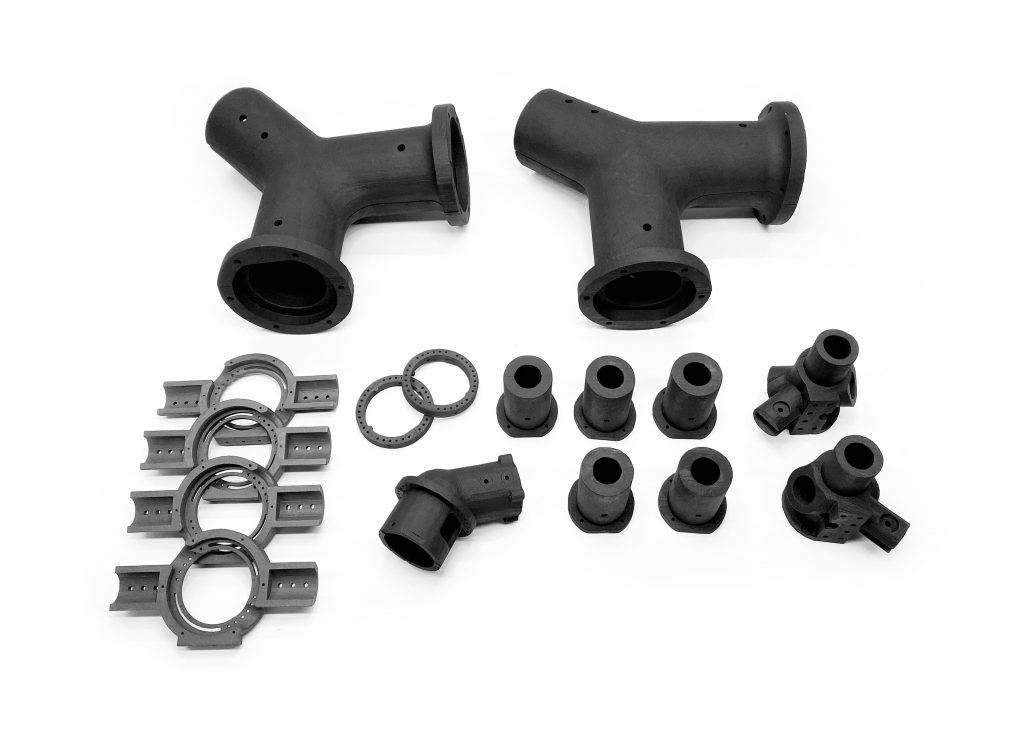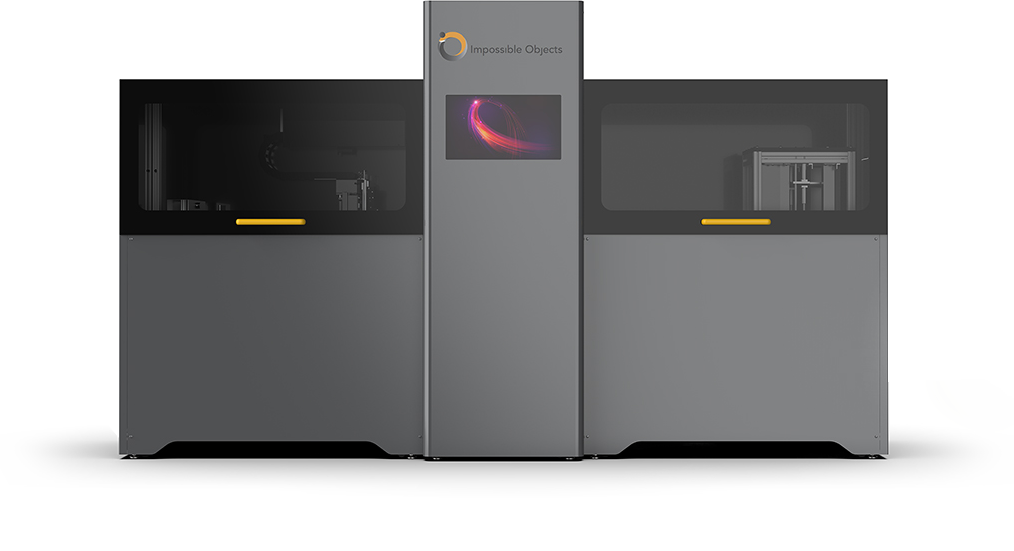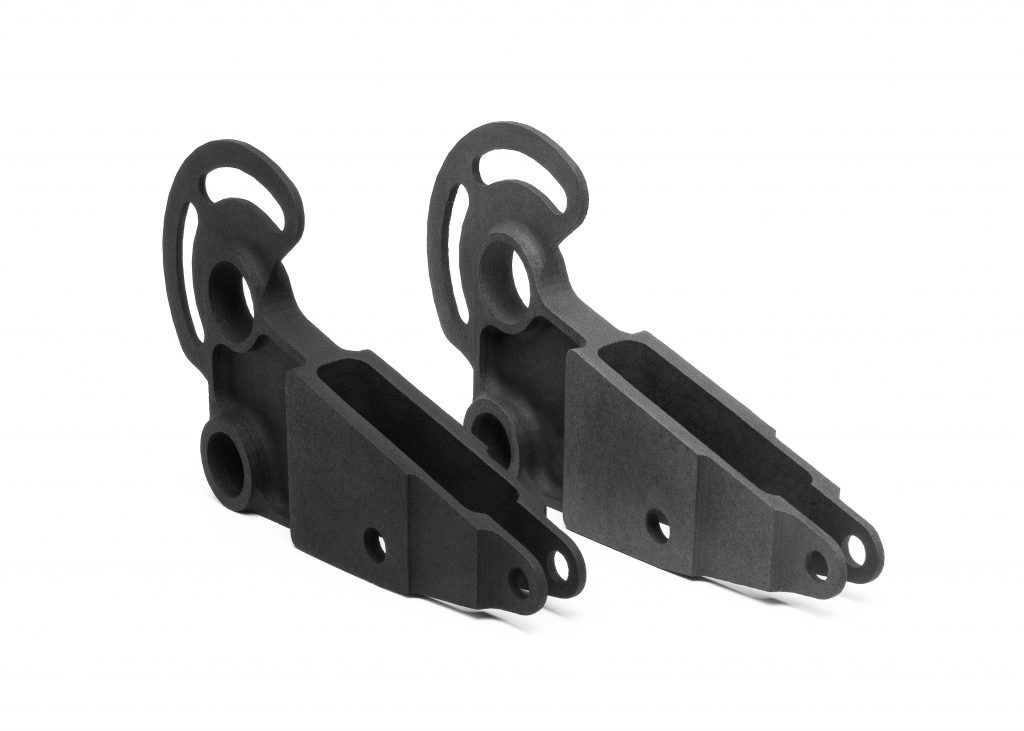3D printing service provider Ricoh 3D has partnered with composite 3D printer manufacturer Impossible Objects to launch a new ‘Powder-based 3D Composite’ materials range.
Designed for both functional prototyping and small batch production, Carbon Fibre PEEK and Carbon Fibre PA12 are compatible with Impossible Objects’ proprietary 3D printing technology – Composite-Based Additive Manufacturing (CBAM). The new material line can be used to 3D print cost-effective industrial components with excellent strength-to-weight ratios and mechanical capabilities comparable to that of some metals.
Mark Dickin, Additive Manufacturing & Moulding Engineering Manager at Ricoh 3D, said, “Composites are set to be an area of huge growth in additive manufacturing in the coming years, so we are proud to be working with Impossible Objects to be at the forefront of the European movement. Carbon Fibre composites are industry-leading when producing lightweight yet strong parts.”

What is Composite-Based Additive Manufacturing?
It’s not uncommon to see extrusion-based technologies used to fabricate carbon fiber-reinforced parts, but Impossible Objects flips this notion on its head with a powder-based approach. According to the company, CBAM is the only process to combine long-fiber reinforcements with high-performance polymer powders to create continuous fiber composites.
The technique involves feeding a set of long-fiber carbon sheets into the printer, which are used as a print bed. A clear binding fluid is then jetted onto the sheets using a thermal inkjet printhead, and the polymer powder is deposited on top, adhering to the printing fluid and fibers underneath. The excess powder is then removed and a powder-coated layer is left behind, complete with fully functional carbon fiber reinforcements. This process is repeated for all subsequent layers.
Once all of the layers are in place, the part is heated and pressed to melt the polymer stacks into the final height and form. As a final step, the unbonded portions of the fiber sheets are removed, revealing the geometry of the final part. Unlike chopped fiber parts, the resulting component is end-to-end reinforced with long fibers, providing an improved level of part strength.
Bob Swartz, Founder and Chairman of Impossible Objects, adds, “Our collaboration with Ricoh 3D is another major endorsement of our revolutionary 3D printing process. Our customers, from government agencies to Fortune 100 companies, have put our approach to work to create high-performance parts for everything from aircraft and cars to athletic gear. CBAM opens up new possibilities for additive manufacturing by making it possible to produce stronger, high-performance 3D printed parts at dramatically lower cost than ever before.”

Carbon Fibre PEEK and Carbon Fibre PA12
The new material line, when combined with CBAM, grants users the ability to produce a whole host of part types. PEEK powder, with its high thermal stability (340⁰C), flame retardant qualities, and excellent strength (>130MPa) has applications in everything from aerospace to drones and medical devices. Similarly, PA12 features great chemical resistance and a high strength of >100MPa, making it stronger than equivalent injection molded parts.
Dickin concludes, “These properties make the materials ideal for tooling and end-use applications in a range of industries, including medical, aerospace, automotive, sport and industrial; creating anything from propellers to gear components, golf clubs to prosthetics. It was very important to us that this was a sustainable offering. All powder can be recycled by extracting the waste material off the sheet, ensuring nothing is wasted and making the process even more efficient than SLS.”

With ongoing advancements in additive manufacturing technology, high-performance engineering materials are now commonplace in the 3D printing industry. Earlier this month, Polish 3D printer manufacturer Zortrax launched a new line of engineering resins for use with the company’s Inkspire UV LCD 3D printer. The Zortrax Resin Tough range is characterized by its excellent mechanical properties and low shrinkage.
Elsewhere, chemicals company Evonik recently launched a new ready-to-use PEEK filament for the 3D printing of industrial parts. The high-temperature material, named INFINAM PEEK 9359 F, is designed as a metal replacement for “infinite” 3D printing applications.
Subscribe to the 3D Printing Industry newsletter for the latest news in additive manufacturing. You can also stay connected by following us on Twitter and liking us on Facebook.
Looking for a career in additive manufacturing? Visit 3D Printing Jobs for a selection of roles in the industry.
Featured image shows composite parts 3D printed in CF PEEK and CF PA12. Photo via Ricoh 3D.


